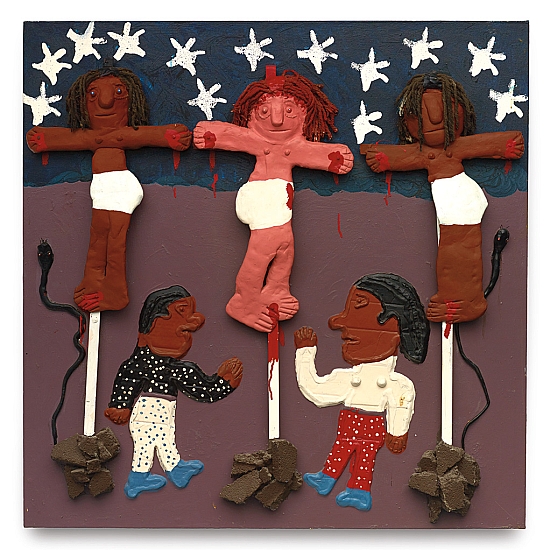At first glance this painted construction evokes the commonly displayed image of Jesus on the cross flanked by the thieves who were crucified with him, according to New Testament accounts. However, Dial Africanizes this scene by giving the figures of the thieves a dark brown hue and constructing their hair of rope, creating the effect of dreadlocks. Although Jesus has a lighter skin tone, his hair is also fashioned of reddish-colored rope, suggesting that he might simply be a lighter-skinned person of African descent. Or Jesus' race is deliberately made ambiguous by Dial to complicate an easy reading of this piece as simply a statement about racial suffering. Or Dial may want to suggest that the martyr's race does not matter when the martyr is committed to the cause of human liberation. At any rate, Dial further complicates this scene by depicting Jesus and the thieves as hanging against a blue backdrop on which stars are painted in such a way that they form a crown for the heads of the figures. At the same time, the presence of the stars in combination with their arrangement evokes the American flag, thus politicizing the whole scene in interesting ways. In the end, Dial seems to invite us to read Jesus and the Two Thieves as an ironic statement on the American justice system in which African Americans are often singled out for unfair and harsh punishment in an almost sacrificial manner. The evil and unfairness of this situation is further suggested by the inclusion of serpents that rise menacingly in the background and two racially ambiguous figures who appear to be throwing dice at the foot of the cross on which Jesus hangs, perhaps suggesting the arbitrary nature of justice in America for African Americans.
